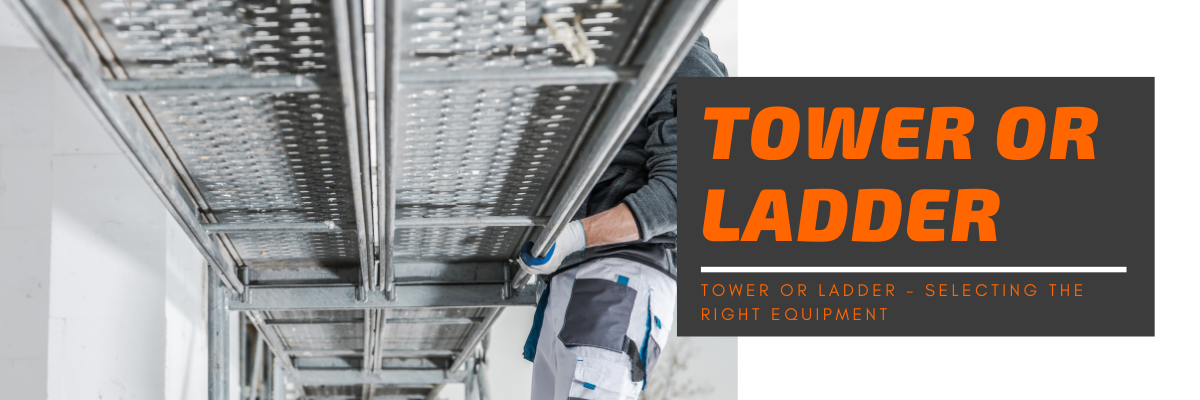Both ladders and scaffold towers are used all around the world by thousands of people each day. They both have their advantages and disadvantages to being used. In today's post, we will be taking you through the pro's and con's of both ladders and scaffold towers and giving you all the information required to help you decide which to use.
Ladders and Towers all come in a wide range of materials with the two most popular aluminium and fibreglass. Each one of these materials has benefits and can be found below.
Aluminium - This is the most popular material for a ladder and tower due to its strong but lightweight qualities. Aluminium is very cost-effective and very reliable. When choosing a material always take a look at your risk assessment, are you working around electricity? If so under no circumstances use an aluminium product.
GRP/fibreglass - GRP ladders are non-corrosive around certain elements and can be used in Zone 1 environments. As well as this they are also non-conductive up to 30,000 volts so therefore ideal in more chemical environments or around electricity.
When comparing ladders to scaffold towers, you will find that on the whole, ladders are obviously much cheaper and due to the size difference they are easier to erect and take down. The HSE recommend anyone using a ladder is competent to do so and although best practice suggests users should be involved in training, this is not compulsory as long as you are competent to use a ladder. Tower training on the other hand is a requirement and in-depth courses are required before you can erect, dismantle and work on a tower.
The duration of a task is also a huge factor when choosing your equipment. For example, if you are working in a large area, you will find that it is not only quicker but safer and more comfortable to use a scaffold tower. Ladders are only meant for tasks that take less than 30 minutes, as you should never work more than 30 minutes in one position, due to comfort and safety.
Scaffold towers require a large area of space to operate where ladders will allow you to work in restrictive spaces. Always ensure that when using a ladder or scaffold tower that tools are always secure and you are not overreaching. When using a ladder a good rule to follow is the belt buckle rule, as you should always have your belt buckle within the rungs of the ladder.
|
Ladder Advantages/ Disadvantages |
Tower Advantages/Disadvantages |
|
|
To summarise if you are completing a quickly small area job, then a ladder is your tool of choice. But if it is a 30-minute plus, sizable area task, then we would suggest looking into using a scaffold tower for your safety and comfort.
We hope you have made your decision and found the right working height solution for you.
For more information on ladders or scaffold towers please don’t hesitate to get in touch with our expert team on 01204 590 232 or contact us here.

